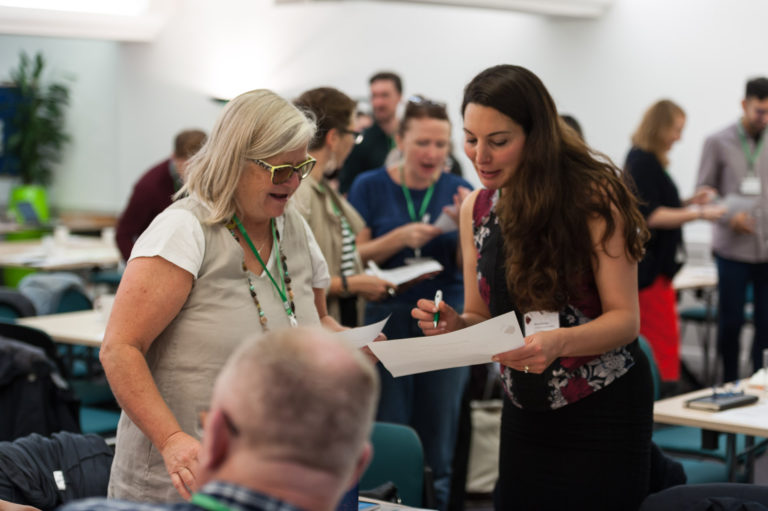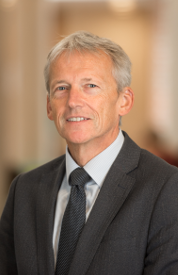PhD Student Abbie Cairns attended the GuildHE Research PhD Summer School in 2021. Abbie and fellow student Philly Iglehart instigated a peer suport community for their fellow students. Here Abbie reflects on the approach they have taken and how it relates to her research and professional experience as an artist-educator.

In October 2021, along with Philly Ricketts, I started facilitating the GuildHE PhD Peer Sessions. A space for post-graduate research students and early career researchers to meet and chat monthly about their research. My background is in art and art teaching, and my teaching and learning philosophy is concerned with peer learning.
Coming from an art background, peer learning has been at the forefront of my educational journey, mostly in the guise of group crits (Shreeve, Waring, and Drew, 2009; Thornton, 2009; Wojak and Miller, 2015; Art Quest, 2018; Lermans, 2018). When studying for my PGCE, I saw this notion of getting together in groups to learn and talk as transferable and beneficial. Since then, wherever I have gone, I have left behind a peer learning group.
In this short blog post, I will share with you some of the many reasons I find peer learning beneficial and what you can expect from the GuildHE PhD Peer Sessions.
A simple structure
At the heart of a successful peer-learning environment is a simple structure (Vidokle and Rosler, 2008). The GuildHE Peer Sessions follow the structure listed below.
- A welcome from your facilitators, and check in asking how everyone is feeling.
- An introduction to the topic by the participant who suggests it, or by a facilitator.
- The sessions allow for facilitated dialogues to take place (Lermans, 2018). Rather than the sessions being a free-for-all, there is an element of structure. The facilitators manage attendees’ expectations and keep an eye on timing.
- The session is ended (on time), and facilitators ask for suggestions for future session topics.
The sessions allow you to become more self-reflective and critical about your research practices (Percy, 2004). Research has found that learners are more likely to give more direct feedback to each other than tutors (Dweck, 2014), making the learning processes faster and more effective.
A respectful environment
We wanted to create a respectful environment where peers could share questions and problems with other PGRs (Hattie and Timperley, 2007) to help develop practices related to research (Davis and Tilley, 2016).
Brookfield (1995) believed critical inquiry happens most productively in groups where peers engage in mutually respectful but critically rigorous conversations. The GuildHE Peer Sessions are the perfect space for this to happen.
A permanent digital location
The GuildHE Peer Sessions are a digital offer that implements the use of available technology (Wojak and Miller, 2015). Sessions are always hosted on Zoom, which has allowed us to develop an environment that participants become comfortable and accustomed to (Davila and Waterston, 2009).
Ahead of each session, a Zoom link will be shared on Slack and through an email announcement. Click the link provided at the start time and leave everything else to your facilitators.
A supportive community
The GuildHE Peer Sessions provide you with a supportive community (Day, 2012) of other PGRs. When engaging with this community, you gain access to multiple perspectives on the topics covered (Latham, 2018), which allows participants to consolidate their knowledge collaboratively.
The support can also have benefits outside of those for your academic work by fostering a sense of shared risk-taking (we are all in this together!) and offering practical and emotional support (Cordingley, 2015).
Additionally, peer learning at schooling and further education level has been shown to be motivational (Ofsted, 2021), and research into adult learners showed it increases self-confidence (La Porte, 2015). From my experience, this is also true in post-graduate level education. If you want to increase your confidence and self-esteem, pop along and enjoy the comradery of your peers’ (La Porte, 2015).
A group of near peers
Peer learning (Armitage, 2012) is most effective if the groups include learners working at different levels (Cowley, 2013). In the GuildHE Peer Sessions, you will find PGRs working at different levels, from those just starting to those nearing the viva and those studying full-time and part-time.
Near peers learn from each other in the circulation of knowledgeable skills, as novices in the field interact with more experienced PGR colleagues (Lave and Wenger, 1991). If you have mastered the art of writing a literature review, come and share the knowledge with someone who hasn’t quite got there yet. This is a benefit of having a group of learners of mixed ability working together (Seethamraju and Borman, 2009). If we were all at the same stage, the learning processes would not be as effective.
A social experience
You might not be drawn to us by the topics on offer and that is fine, as learning is social (Harlan, 2020). Research into communities of practice suggests that often participants are drawn to communities, such as the one we are creating in the GuildHE Peer Sessions, due to the wanting to interact with peers (Wenger et al, 2002). So, whether or not you are invested in the topic on offer, you are always welcome to come along and say ‘hello.’
Additionally, we can learn more together than we can apart, as social interaction is important to learner development (Vygotsky, 1978). Vygotsky refers to this as the zone of proximal development (Vygotsky, 1974), where learning takes place with the aid of more knowledgeable others (Vygotsky, 1978).
Join our PhD Peer Support Community
This blog post is a call to action, a call to you to come to the next GuildHE Peer Session to experience these benefits of peer learning. After all, we can achieve more together than we can alone.
References
Armitage, A. (2012) Teaching and Training in Lifelong Learning. Open University Press. 4th Edition.
Art Quest (2018) How to Peer Mentor. Available at: https://twitter.com/artquestlondon?lang=en. (Accessed 16 November 2022).
Brookfield, S. D. (1995) Becoming a Critically Reflective Teacher. San Francisco: Jossey Bass.
Cordingley, P. (2015) ‘The Contribution of Research to Teachers’ Professional Learning and Development,’ Oxford Review of Education, 41(2), pp. 234-252. doi: 10.1080/03054985.2015.1020105.
Cowley, S. (2013) The Seven T’s of Differentiation. CreateSpace Independent Publishing Platform; 1 edition.
Davila, J. and Waterston, E. (2009) Art Quilts at Play: Ignite Your Inner Artist-Experiment with Surface Design Techniques. C&T Publishing.
Davis, R. and Tilley, A. (2016) What they didn’t Teach you in Art School: What you need to know to Survive as an Artist. Ilex.
Day. P. (2012) The Are Group Crit: How do you make a Firing Squad Less Scary? Available at: arts.brighton.ac.uk/projects/networks/issue-18-july-2012/the-art-group-crit-how-do-you-make-a-firing-squad-less-scary. (Accessed 16 November 2022).
Dweck, C. (2014) The Power of Believing that you can Improve. Available at: http://www.ted.com/talks/carol_dweck_the_power_of_believing_that_you_can_improve/transcript?language=en. (Accessed 16 November 2022).
Harlan, B. (2020) ‘Art Critique as Social Pedagogy’, International Journal of Arts Education, 15(1), pp. 1–10. doi: 10.18848/2326-9944/CGP/v15i01/1-10.
Hattie, J. and Timperley, H. (2007) ‘The Power of Feedback,’ Review of Educational Research, 77(1), pp. 81-112. doi: 10.3102/003465430298487.
La Porte, A. M. (2015) ‘Older Adult Responses to Art Curriculum and Self-Directed Learning’, International Journal of Education through Art, 11(1), pp. 59–74. doi: 10.1386/eta.11.1.59_1.
Lave, J. and Wenger, E. (1991) Situated Learning: Legitimate Peripheral Participation. Cambridge University Press.
Lermans, L. (2018) Critical Response Process. Available at: brooklynartscouncil.org. (Accessed 16 November 2022).
Ofsted (2021) Guidance: What’s Working Well in Remote Education. Available at: https://www.gov.uk/government/publications/whats-working-well-in-remote-education/whats-working-well-in-remote-education. (Accessed 13 January 2021).
Percy, C. (2004) Critical Absence Versus Critical Engagement: Problematics of the Crit in Design and Communication in Higher Education. 2(3), pp. 143 – 154. dio: 10.1386/adch.2.3.143/0.
Seethamraju, R. and Borman, M. (2009) ‘Influence of Group Formation Choices on Academic Performance,’ Assessment and Evaluation in Higher Education, 34(1), pp. 31-40. dio: 10.1080/02602930801895679.
Shreeve, A., Waring, S. and Drew, L. (2009) ‘Key Aspects of Teaching and Learning in the visual Arts,’ in Fry, H., Ketteridge, S. and Marshall, S. A (eds.) A Handbook for Teaching and Learning in Higher Education: Enhancing Academic Practice. 3rd edn. Abingdon: Routledge, pp. 345‐362.
Thornton, S. (2009) Seven Days in the Arts World. Granta Books.
Vidokle, A. and Rosler, M. (2008) Exhibition as School as Work of Art. Available at: www.art-lies.org/article.php?Id=1661&issue=59&5=1. (Accessed 16 November 2022).
Vygotsky, L.S. (1974) Mind in Society: Development of Higher Psychological Processes. Harvard University Press; New edition edition.
Vygotsky, L.S. (1978) Mind in Society: The Development of Higher Psychological Processes. Cambridge, MA: Harvard University Press.
Wenger, E., McDermott, R. A., and Snyder, W. (2002) Cultivating Communities of Practice: A Guide to Managing Knowledge. Harvard Business School Press.
Wojak, A. and Miller, S. (2015) Starting Your Career as an Artist: A Guide to Launching a Creative Life. Allworth Press; Second Edition.


Recent Comments